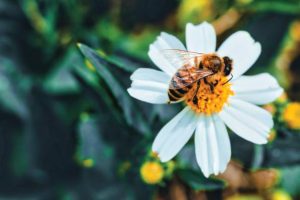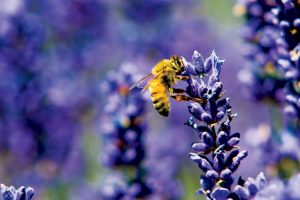Home > Lifestyle > Garden > How to Start a Pollinator Garden
How to Start a Pollinator Garden

Have you heard garden enthusiasts throw around the phrase “pollinator garden?” You aren’t alone. There has been an uptick in public interest when it comes to cultivating more space for pollinators lately. The best part is that the barrier to entry is low. You can start your own pollinator garden whether you’re working with a windowsill, balcony, community garden or sprawling homestead.
See more: 7 Ways to Attract Pollinators to Your Garden
What Is a Pollinator Garden?
Pollinators include everything from honeybees and butterflies to birds and beetles. Depending on where you live and what you grow, you might need pollinators to help pollinate small crops such as tomatoes, peppers and squash or larger ones such as fruit trees. Regardless of what you’re growing, every gardener can benefit from drawing in more pollinators to their plants.

Why You Should Consider a Pollinator Garden
Pollinators are responsible for more than 35% of the world’s food crops as well as a generous amount of non-edible flowering plants. We wouldn’t see the crop yields we do without the 3,500 or more native bee species hard at work in gardens and fields across the country.
That’s reason enough to plant a pollinator garden, as attracting more pollinators will likely increase your garden’s growth, success and crop yields. But you could also consider the fact that some pollinator populations, such as those of bees and bats, are decreasing. They face obstacles such as habitat loss and disease, parasites, and toxic environmental contaminants that are preventing them from finding food. Starting a pollinator garden is a great way to provide a habitat for pollinators in your area and help protect their populations.

How to Start a Pollinator Garden
Pollinator gardens will vary depending on the geographical location and space available. But don’t let that discourage you. You certainly don’t need a farm of your own to make a difference. Even a windowsill garden can prove beneficial to the pollinators in your area. Just keep in mind that the following instructions are basic steps you can tweak or modify to fit your specific circumstances.
See more: How to Start a Vegetable Garden From Seeds
Step One
Determine which native plants grow well in your area. You can find a slew of online resources to help you out, such as the Pollinator Partnership, Lady Bird Johnson Wildflower Center or Xerces Society. You could even contact your local extension office to see if they have anyone on staff who specializes in the subject.
Some common pollinator-friendly plants around the U.S. include:
- Bee balm
- Borage
- Columbine
- Goldenrod
- Lupine
- Milkweed
- Yarrow

Step Two
Choose your location. How much space do you have? Will you be companion planting flowers among fruiting crops, such as tomatoes and peppers? Do you envision a garden made entirely of native flowering plants? Will you plant in the ground, in raised beds or in containers?
Once you know where you can plant, you can determine the quality of your soil and how much light the location receives. This will help you with step three.
See more: 12 Flower Varieties to Plant This Spring
Step Three
Decide which plants you want to grow. You should know at this point what plants are native to your area, how much space you have to work with, the quality of your soil and the amount of light the area receives. This should help you narrow down your native plant wish list to what is realistic, which gives you a better chance at growing a successful and well-populated pollinator garden.
To increase the diversity of pollinators you attract:
- Pick plants in a variety of colors, shapes and sizes.
- Choose plants that bloom in different seasons (early spring to autumn).
- Don’t clean up perennial plants until spring (in case pollinators want to overwinter in your garden).

Step Four
You’ve done your research. You have a list of plants and a fighting chance at growing them to maturity. It’s time to pick out seedlings from your local garden center or purchase seed packets. Some native plants can be harder to come by than others, so don’t be discouraged if you have to shop around a little more than you expect.
If you can’t find seedlings at garden centers in your area or you can purchase seed packets from a number of reputable online sources. Some companies, such as Botanical Interests, even carry assorted seed packs specifically dedicated to attracting pollinators to your garden.
See more: 10 Ways to Make Your Garden More Eco-Friendly
Step Five
Congratulations! You’ve reached the pinnacle of starting a pollinator garden: putting the plants (or seeds) in the ground.
Get your hands in the dirt, tuck in your new additions and get ready to settle into the three W’s: water, weed and wait. With a bit of luck, you’ll have a host of pollinators visiting your plants in no time at all.



